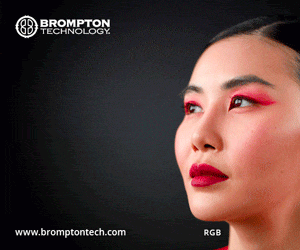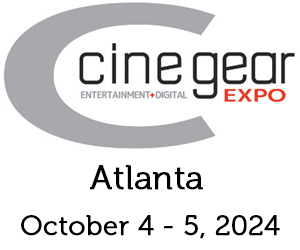
Killing Eve: A look to die for
Posted on Oct 1, 2020
Series 3 of Killing Eve is a masterclass in lighting from cinematographer Julian Court
Pictures BBC
This magazine was founded for primarily aesthetic reasons. When I first saw high-definition footage, it appealed to my appreciation of the moving image. Every year, the industry changes and matures that moving image. It’s a natural evolution, as you would expect. But sometimes certain images unsettle that linear curve, and that shows up as a bump, a blip. When this happens, my interest is piqued, and I try to find out why.
For me, this happens rarely, which is why I trust the instinct so much. The first time was in another industry, when listening to music engineered by George Massenburg. There was something very different about how he captured music. A really insipid analogy is the way Massenburg enabled more ‘space’ around the microphones and recordings. If you’re pushing me for a more emotional response: it was magic!
 I’m going to be thinking about the way that lighting works with the lens choice I’mmaking
I’m going to be thinking about the way that lighting works with the lens choice I’mmaking
And so it was when I first watched the third series of Killing Eve; a brilliant show with a recognised production designer in Laurence Dorman (who is nominated again by the Emmys this year for the show) and photographed and lit by DOP Julian Court, who set the tone for the programme back in Series 1 and, in my opinion, should also have got a nomination for this year’s awards.
Lighting Eve
Court has always been the lead DOP for Killing Eve. In Series 1, he shot the first couple of episodes, and then the last three. Since then, in Series 2 and 3, he has shot six out of the eight. So, quite rightly, he has been responsible for the visual tone of the programme. Crucially, Court lit the very first episodes, which meant he worked with the set-up director and took on the creative decisions before anybody filmed anything.
“That was a long process in Series 1,” he recalls. “We prepped for about 11 weeks, including a lot of foreign travel, scene locations and planning it out, as you do. It was a gentle evolution as a team – creative heads of departments working out exactly what the show is going to be, what its tone is and how they will translate into production design, cinematography and so on.”
Series three
For Court, Series 3 is the culmination of all the work he has done for the first two.
“It’s a difficult one, isn’t it?” he muses. “I remain proud of the work I have done in the first two series, and I’d like to think that there was a subtle progression through the episodes. Things changed and grew and we built upon what we thought had been successful. That’s everybody, from the execs on both sides of the Atlantic through to directors, and my own closer colleagues in the camera world. We came to a feeling about what’s working and what’s not – it’s a subtle change of emphasis to follow the narrative and the characters. Series 3 was an evolution of all that thinking.”
But what is it that elevates the really good cinematography we saw in Series 1 and 2 to something higher? Series 3 was the first one that used the Arri Alexa LF camera, so maybe that’s the answer.

Court ponders on this. “Is it the new camera? Of course, that’s part of a bigger picture. The answer is that it’s the alchemy of a lot of things. In technology terms, yes, the new cameras did change things. Standard format to large format is definitely an improvement. You get a smoothness and detail from the Alexa LF – it’s fantastic. But it’s perfectly true to say that in some other people’s hands you will get results that won’t look as good, interesting or amazing, depending of what you perceive them to be. In others, they might look even more so.”
He continues: “It really depends on a great number of things coming together. Yes, it’s camera technology, which lenses you use with it (very important), the way you light and what all these things are doing together. So when I point that camera at the action, depending on the mood of the scene and who’s in it, I’m going to light it a certain way; I’m going to be thinking about the way that lighting works with the lens choices I’m making and the camera choice that I’ve made. I’m adding a little bit of atmosphere to most of the interiors, which is also playing into the slight diffusion and softening of that image.

“There’s a little bit of filtration on the camera I use, which is part of my craft of having tested, tried and looked at dozens of different products, and tried out many things on many cameras. And, of course, I’m a fan of the craft and what all my peers are doing and wondering why mine aren’t looking as good as theirs. It’s all of those things playing together that leads to a successful piece of work, I suppose. I don’t want this to sound at all big-headed!” he laughs.
“I was listening to David Gilmour, the guitarist with Pink Floyd who has auctioned off all of his guitars for charity. Something like 150 guitars. He was asked by a BBC journalist that if he, the journalist, bought the one that Gilmour used on The Dark Side of the Moon, would it sound like that when he plays it? Gilmour gave a wry smile and took it in the right way and just said, ‘Well, some of it’s in the fingers.’ But that’s part of it, I’ve been doing the job a long time and its my craft. I knew what I wanted to achieve, I’ve learned from watching other people who are brilliant at it and I’m putting all that together with what I want to achieve, and using the technology and the talent around me and hoping it comes out well.”
What’s the difference?
If you see something different in a film or episodic, something better than you’ve seen before, and if you’re in the industry, it does intrigue you. As a cinematographer, you would want to either copy or at least learn about it as a technique. It could be HDR, of course, as mastering that heightens specular light and expands the shadows – but Killing Eve isn’t in HDR. It’s typical of Court that he did some HDR passes anyway, for his own learning curve. “We felt as a future proofing thing that it would be sensible to do. But in terms of lighting, or my approach to lighting, I can tell that one of the fundamentals of my personal approach – which is perhaps an ingredient in what you’re seeing – I have a fairly fanatical take on ambience; the ambience of light.”
 I can tell that one of the fundamentals of my personal approach is that I have a fairly fanatical take on ambience; the ambience of light
I can tell that one of the fundamentals of my personal approach is that I have a fairly fanatical take on ambience; the ambience of light
He clarifies: “So, in any given room lit by daylight or lanterns, or whatever it might be lit by, there is an ambient light in the room. If we’re looking at that in an honest way, a real-life way with our eyes, we’ll see the brightness of the source of the light – whether that’s sunlight or street light falling through a window, or it’s just the daylight softly coming through. We won’t see what you sometimes get in cinematography, which is near total darkness on the other side of things. It’s a very common and much-practised, and often very effective for dramatic heightening to sort of exaggerate the contrast of that situation.”

One of the things Court really likes to do is use the contrast and shape of the light, but he is more keen to represent a soft, gentle ambience. “Sometimes you realise when you get there and you’ve managed it that it becomes the most attractive part of the lighting. It’s easy to approach lighting thinking that it’s all about that beam of sunlight in the background or it’s that lovely strong light that’s hitting the back of someone’s head or whatever. Sometimes that might be the case – obviously that all depends on the dramatic intention – but it’s surprisingly often that it’s actually this much more subtle ambient light, which I think sometimes people just don’t care for as much or know how to work with as much.

“What I’m talking about is not losing that ambience. By placing a negative fill, you’re cancelling anything that’s bouncing off surfaces. And, of course, part of our job as DOP is managing the light that you’re working with – it’s not always creating it from scratch in a studio situation. You’re very often managing what’s available to you and making the best of it. If you’re walking into a large space with lots of light bouncing off white walls and it’s making everything look flat and unappealing, that’s not what you want and you should add some negative fill for sure.”
 It’s getting that to feel natural, appealing and interesting. That’s what I want
It’s getting that to feel natural, appealing and interesting. That’s what I want
Creating ambience
Court says that what is most difficult about creating ambience is that his camera simply does not have the same dynamic range human eyesight naturally does. “It’s easy to create a nice bit of shape light coming through a window that will fall on to the action and look great,” he explains. “It’s the rest of the room that’s not so easy. It’s getting that to feel natural, appealing and interesting. That’s what I want.”

And Court does all this while juggling the time constraints that TV has these days, although Killing Eve is a well-funded show and prep time is generous. “I have some ‘go- to’ strategies that are supported by a great team, gaffer and electricians who know me and know what I’m trying to do,” Court says. “Killing Eve is a reasonably well-funded TV show, which means we can sometimes afford to do more preparation, so we’ll arrive at a location with it pre-rigged and pre-lit up to a point. And then we’re really just fine-tuning and adding the last bits and bobs when we actually see the actors doing the scene. It’s great to work that way.”

Are lenses the secret source?
Court did look at the new Arri Signature lenses to twin with the new LF camera, but decided against them, despite liking them.
“We used Canon K35s, which are very old. I have a particular set that I use that belong to a friend of mine. It’s one of those things that I lobbied for from early on to get that particular set.”

 The Canon K35 lenses bring that inherent character, age and quality with them
The Canon K35 lenses bring that inherent character, age and quality with them
Court says that when he initially moved to large format, there were very few lenses available. “All the manufacturers are now making large format lens sets, but when they first became available to us, there were just a few options that would actually cover the sensor. But it just so happens that, with the exception of the 18mm, the K35s do. They bring that inherent character, age and quality with them, but married with the large format. They just look really nice to my eye and really liked what they did.”
He adds: “But I also wanted to have something different to mix in with it – I didn’t want the look to be as simple as that one set of lenses on the LF, so we also used the first set of production lenses of the Arri DNA lenses. I used a prototype set of DNAs on Series 2 of Killing Eve and I think (you’d have to check with Arri) I was the first person to use them. They were literally prototypes, they weren’t finished, but they agreed to let me have them. Although there were much bigger productions out there that might have been using them.

“There were some things about those lenses that I loved and some things I liked less, but I decided there were enough interesting qualities in them. I also wasn’t using them as my prime set, which was the K35s. I only needed certain ones from the DNA set and only certain things needed to work for me.” He concludes: “I got great results I really like, and I’m sure they are part of what you’re seeing on the finished look.”
It’s clear that what makes Killing Eve so beautiful is not just the amazing cameras and lenses, but Court’s hard work, attention to detail and dedication to ambience.
This article first featured in the September 2020 issue of Definition magazine.





















